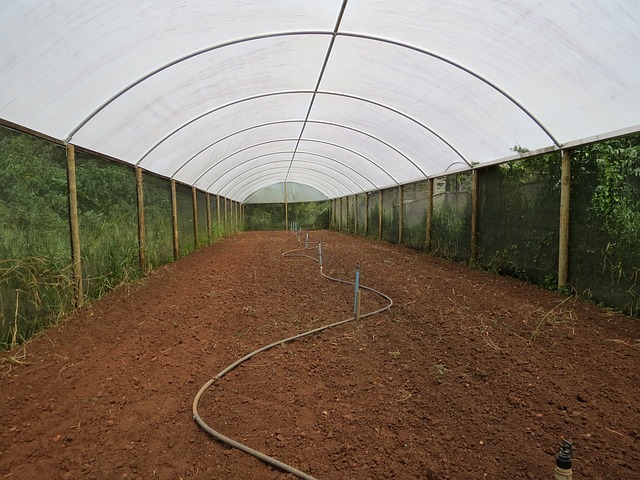How to Choose the Right Greenhouse for Your Gardening Needs
Posted on 06-06-2024 10:07 πμ

Are you ready to take your gardening game to the next level? A greenhouse might be just what you need. You can grow plants year-round and extend your growing season with a controlled environment. But how do you choose the suitable greenhouse for your needs? Read on to find out!
Introduction to Greenhouse Gardening - Greenhouse for sale
Greenhouses are perfect for those who want to take their gardening to the next level. They allow you to control the environment in which your plants grow, providing them with optimal conditions for growth. A greenhouse is an excellent investment whether you're looking to start seedlings early or grow vegetables during the winter months.
Choosing the Right Size and Shape for Your Needs
The first step in choosing a suitable greenhouse is determining the size and shape best suits your needs. Consider the space in your yard, how much room you'll need for your plants, and any additional equipment like benches or shelves. You may also consider whether you plan to expand your garden, as a giant greenhouse could accommodate these plans.
Materials and Frame Types to Consider
Once you have determined the size and shape of your greenhouse, it's time to consider materials and frame types. Traditional wood frames are popular, but aluminum and PVC are also options. Each material has advantages and disadvantages, so consider factors such as durability, cost, and ease of assembly.
Ventilation and Lighting Requirements
Another important consideration when choosing a greenhouse is ventilation and lighting requirements. Proper ventilation is crucial for maintaining the temperature inside the greenhouse, while adequate lighting ensures that your plants receive enough sunlight to thrive. Some greenhouses have automatic vents and fans, while others require manual adjustments. Make sure to research different options before making a final decision.
Additional Features and Accessories to Enhance Your Growing Experience
Finally, don't forget to consider additional features and accessories that can enhance your growing experience. For example, some greenhouses have built-in heating systems, allowing you to keep your plants warm during colder months. Others feature automatic watering systems, making it easy to keep your plants hydrated. Think about what features would make your life easier and choose accordingly.
In conclusion, choosing a suitable greenhouse for your gardening needs requires careful consideration of several factors. Many elements must be considered, from size and shape to materials and add-ons. By taking the time to research different options and determine your specific needs, you can select a greenhouse that will help you achieve your gardening goals.
Growing Vegetables in a Greenhouse: A Beginner's Guide
Greenhouses are becoming increasingly popular among home gardeners who want to extend their growing season and enjoy fresh, homegrown vegetables all year round. If you're new to greenhouse gardening, here's everything you need to know to get started.
Introduction to Greenhouse Gardening
A greenhouse is a miniature version of the Earth's atmosphere, where plants can grow under controlled conditions that mimic natural environments. In a greenhouse, you can control temperature, humidity, light levels, and other environmental factors to create an ideal environment for your plants to thrive.
Choosing the Right Greenhouse for Your Needs
Many greenhouses are available today, ranging from small hobbyist models to large commercial structures. When choosing a greenhouse, consider your needs and budget. Some essential features to look for include durability, ease of use, ventilation, heating options, and size. You may also consider investing in accessories such as shelving units, benches, and irrigation systems.
Tips for Successful Greenhouse Vegetable Gardening
Once your greenhouse is set up, it's time to start planting! Here are some tips for successful greenhouse vegetable gardening:
Choose the suitable crops: Not all vegetables do well in a greenhouse setting. Start with easy-to-grow crops like lettuce, spinach, radishes, and herbs.
Maintain proper temperatures: Keep the temperature inside your greenhouse between 60°F and 75°F during the daytime and around 55°F at night. This will help prevent heat stress or cold damage to your plants.
Provide adequate lighting: Most vegetables require at least eight hours of sunlight daily to grow correctly. Consider installing supplemental lighting if your greenhouse doesn't receive enough natural light.
Water regularly: Ensure your plants receive plenty of water, but avoid overwatering, which can lead to root rot. Use a drip irrigation system to ensure even moisture distribution.
Monitor pests and diseases: Regularly inspect your plants for signs of pests or diseases. Use organic methods to manage any issues before they become widespread.
Common Mistakes to Avoid when Growing Vegetables in a Greenhouse
Here are some common mistakes to watch out for when growing vegetables in a greenhouse:
Overcrowding: Don't crowd too many plants together, as this can promote disease and limit airflow. Leave ample space between each plant.
Underventilating: Without sufficient ventilation, your greenhouse can quickly become hot and stuffy, leading to poor plant growth and potential health problems. Open vents or install fans to maintain good air circulation.
Overheating: During warm summer months, provide adequate cooling to prevent overheating. Install exhaust fans or misting systems to keep temperatures down.
Neglecting maintenance: Just because your plants are growing indoors doesn't mean they don't need regular care and attention. Check on them daily, prune dead leaves, and replenish nutrients.
Conclusion
With these tips in mind, you should be well on your way to enjoying delicious, fresh produce grown right in your backyard. Whether you're looking to save money on groceries or enjoy the satisfaction of growing your food, greenhouse gardening has something to offer everyone.